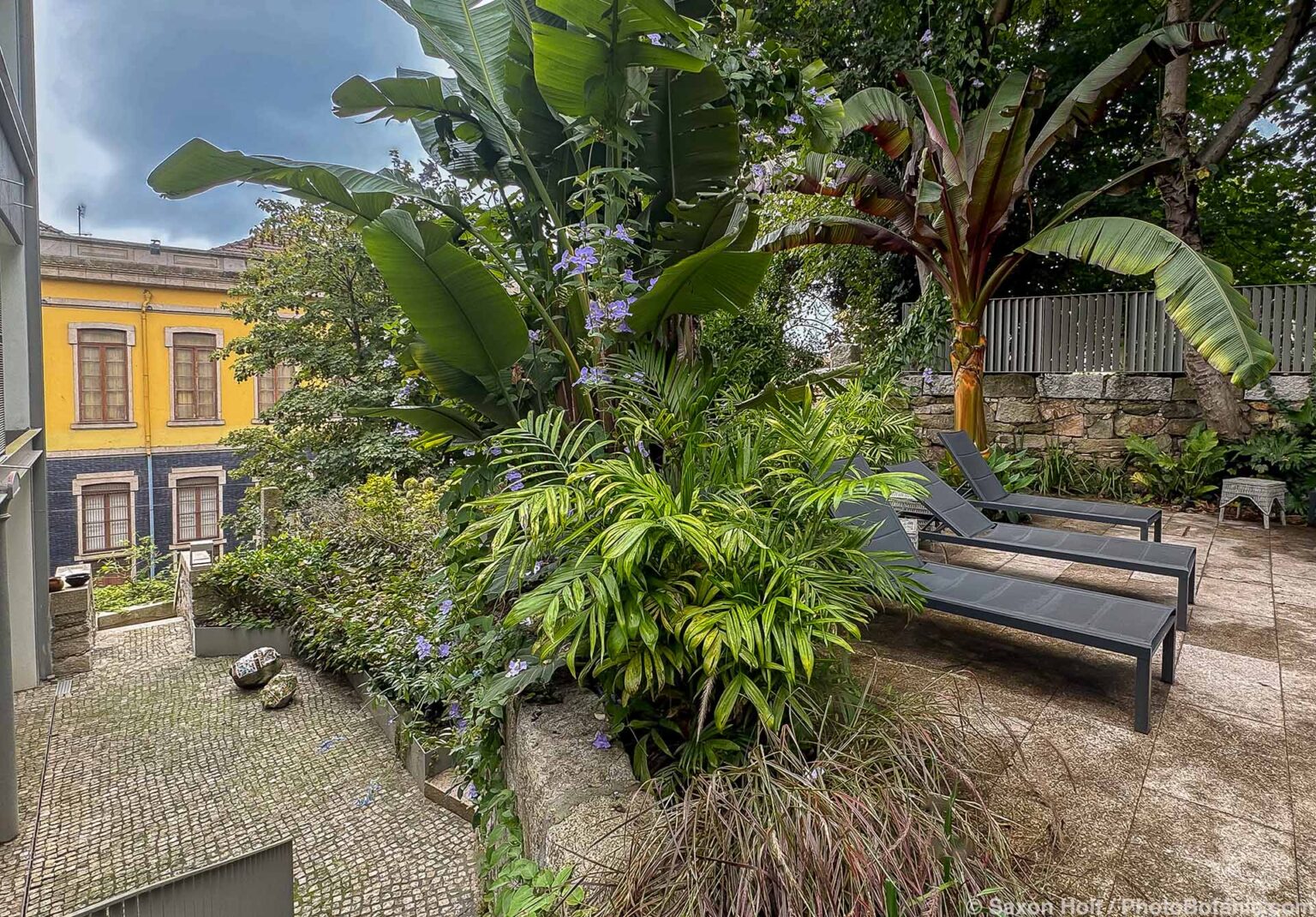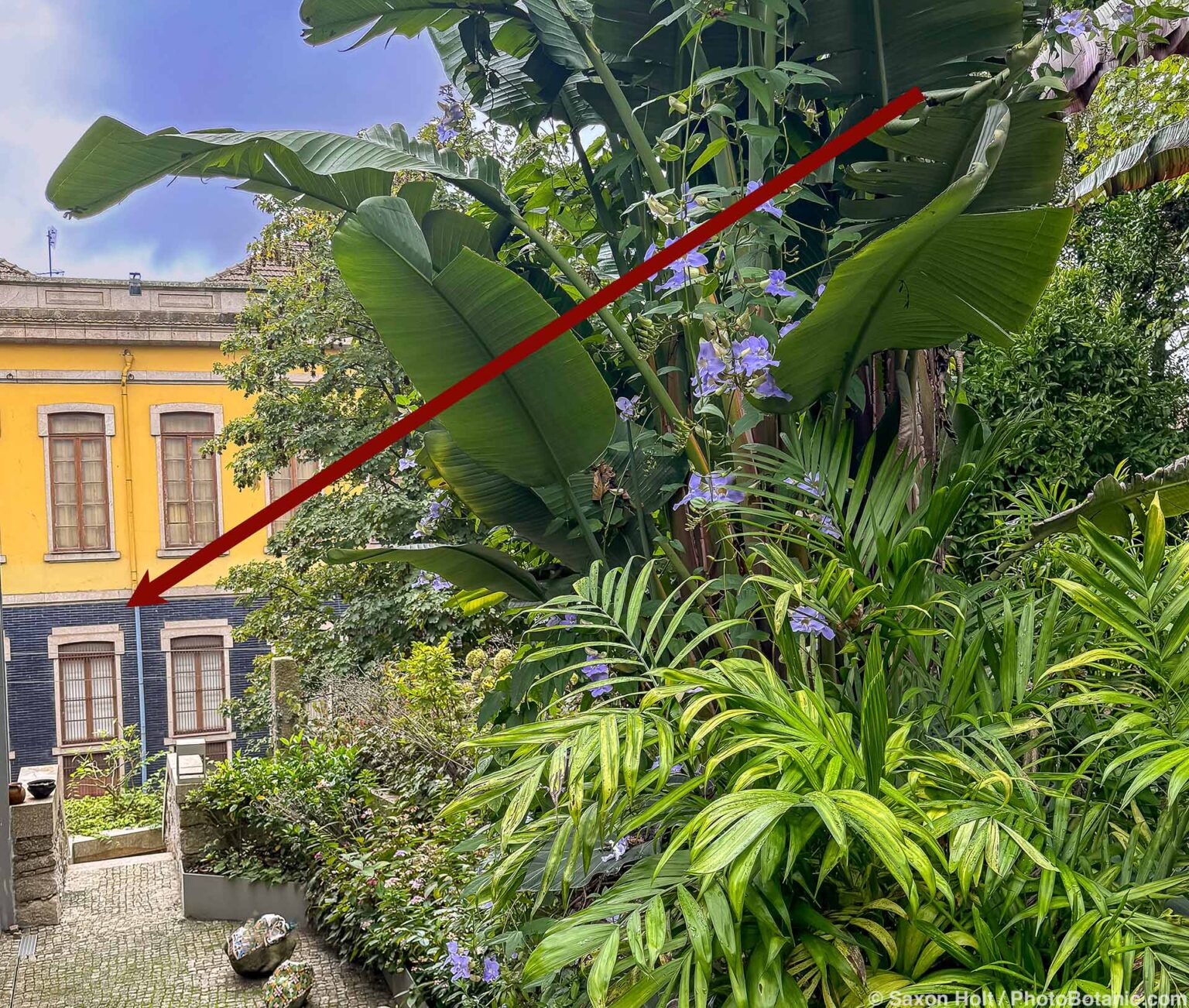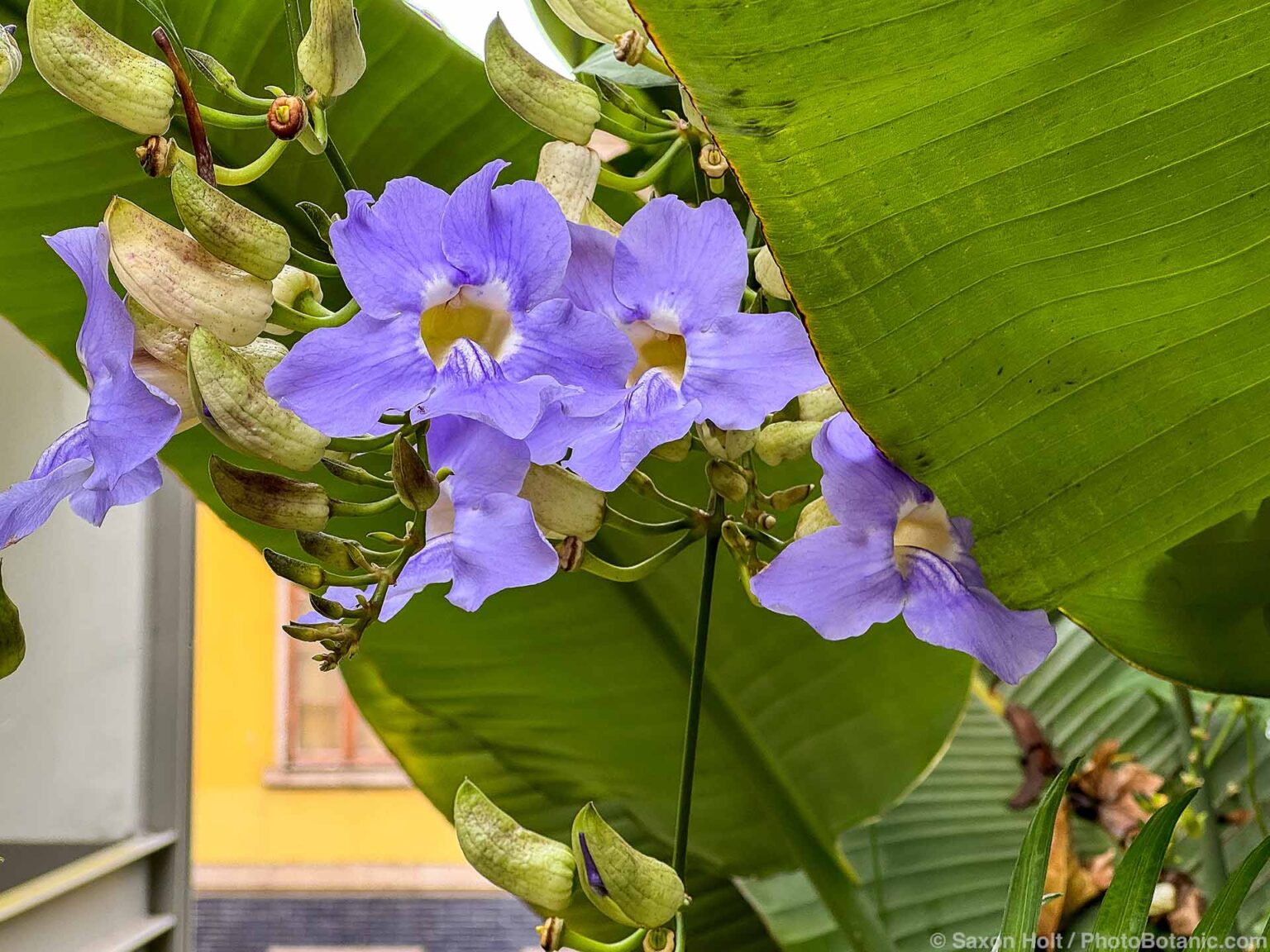
Camera Phones are Cameras: Flower Point of View

Contributor
Pacific Horticulture’s monthly photo series by renowned garden photographer and former Pacific Horticulture Board Member, Saxon Holt of PhotoBotanic and Summer-Dry
Winter 2024
Be sure the photo you are seeing is the one you take. Don’t just point the camera at a scene thinking it will take the photo that your brain is imagining. Think for a moment (or two) what is exactly on the screen, what story you want the photo to tell, hold the phone (couldn’t resist), and compose for that.
I was recently in Portugal and while in Porto stayed at Massarelos House, a marvelous urban inn with lovely terraced gardens. This was not a garden trip and I was not expecting to photograph anything professionally, so I only had my phone. However, I saw garden photo potential with all the lush foliage in an unexpected setting, including a stunning blue flowering vine weaving through.
See the clock vine, Thunbergia grandiflora?

It sure caught my eye. But you wouldn’t know it from the photo.
You can’t just see something amazing and expect the camera to know what you are thinking. Think like a camera (which happens to be the title to one of my e-books :>) Make the camera find the photo you are really seeing.
It is easy to be sloppy and hasty working a camera phone but simply because your camera is also a phone and texting device does not mean it is not an actual camera. If you are serious about getting a photo you have to work a little harder and get over the frivolous feeling of being a make-believe photographer holding a phone in your hands.
The flower catches your eye? Make that the story; go find the photo.

I needed to figure a way to isolate the flower from the tangle of textures and conflicting lines. I couldn’t just zoom in from where I was standing. I started off trying, as you can see in the second photo above. It is closer and a nice photo if the foliage is the story but it is still not a flower picture.
I would need to move, work a little harder, find a different point of view. This is the really fun part of being a garden photographer, having a camera as an excuse to look carefully at plants and flowers.
I realized the massive leaves of the banana plant might provide a way to isolate the flower, and I could indeed move across the terrace to get physically closer to the flowers and look for a new photo.
At this point I freely admit I was glad to be working with the camera phone so I could easily move it and quickly see various combinations. Normally I work with a tripod slowly making subtle adjustments to a composition, which can be a tedious process especially here with the dense plantings.
I did slow down as I saw the final composition come to me. There became a precise point of view to hold the camera and put a spray of flowers between the bold leaves and still see the colorful architecture of the urban setting.

That too is part of the story, and needs to be part of a careful composition.
I began Camera Phones Are Cameras with this full disclosure: I have been a professional garden photographer for 40 years and do not take any of my professional photos with a camera phone. However, almost all the tips I give in my workshops apply to any camera, recognizing the camera is only a tool to capture an image.
It is up to you to take the picture, and if used with intention and consciousness any camera or camera phone can take wonderful pictures; especially if you learn a few techniques.
Read more from this Series
Resources
For more tips, visit Saxon’s Garden Photography Workshop on PhotoBotanic.com
Visit The Learning Center at PhotoBotanic.com for great books about Garden Photography
Visit PhotoBotanic for more inspiring photographs by Saxon Holt
Learn More About Summer-Dry and Celebrate Plants in Summer-Dry Climates









Responses